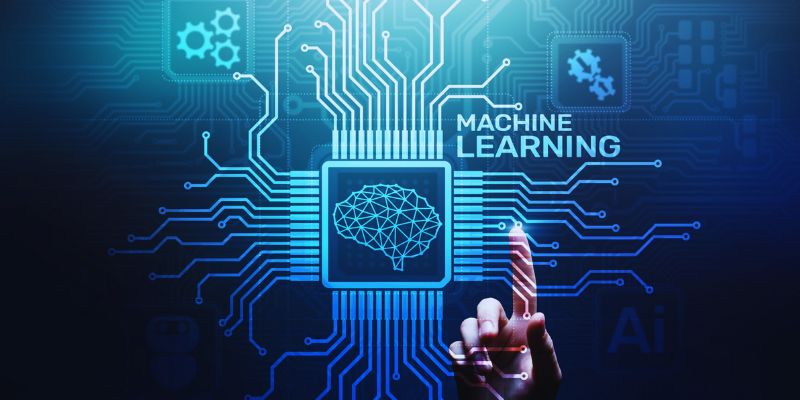Advertisement
Machine learning is a powerful tool that drives many modern technologies. Machine learning succeeds when supported by large, high-quality datasets. Even the most sophisticated algorithms suffer to produce reliable results without enough data. Data must define machine learning limits and affect performance, reliability, and application. The accuracy, training, and prediction strength of models depends on data quantity and quality.
Organizations creating machine learning plans have to realize these constraints. High-volume data processing also presents difficulties with storage, tagging, and validation. Companies have to evaluate the expenses and difficulty of gathering accurate information. Machine learning faces both logistical and technical hurdles. Realistic project goals and improved artificial intelligence solutions follow from an awareness of these difficulties.

To run effectively, machine learning models need large volumes of data. Models improve as more data becomes available. Too little data often causes errors, underfitting, and misclassification. Every phase of assessment training is affected by data volume. Through analysis of vast, varied information, algorithms learn patterns. Insufficient data can lead to either too basic or biased models. Correct forecasts depend on diverse and enough input. Real-world performance usually drops when data is limited.
Getting enough data calls for time and effort. Many times, companies undervalue these needs. Data demands rise quickly for difficult activities. Even simple models could call for thousands of samples. The reliability of models suffers without volume. Machine learning scaling calls for constant data flow. Many times, engineers compensate with data augmentation. Synthetic data cannot entirely replace genuine input, though. Developers must align datasets closely with their intended use. Bad output follows from poor data input. Acknowledging data volume as a basic need enhances general model performance.

Good results cannot be ensured just by quantity. Model accuracy depends heavily on data quality. Excellent training data guarantees accurate and unambiguous learning trends—confusion in learning results from noisy or mislabeled input. Data errors directly translate into bad model choices. Irrelevant or conflicting data also adds noise to the learning process. Structured, clean data increases results. Older records or missing values weaken models. Many models fail because of the low quality of input. In supervised learning, the accuracy of labels counts.
Wrong labels mislead algorithms. Inadequate features complicate procedures of decision-making. Reliable data creates solid models right from the beginning. Engineers can correct certain issues using preprocessing. Software cannot solve all data quality issues. Sometimes, human evaluation is required. Automated data pipelines need consistent audits. Data processes ought to be regular in quality control. Investing in clean data saves time down the road. Fewer model errors follow from better data. Organizations must always give top priority to data quality.
For models of supervised learning, labeled data is necessary. Machines cannot distinguish results or patterns without labels. Manual labeling demands more time and effort. It also requires domain knowledge if one wants accuracy. Even simple tasks like labeling images can take days. Annotators or experts could require weeks or months to complete complex labeling tasks. Directly affecting model performance are labeling errors. Labels with errors cause faulty training routes. Labeling automation carries some hazards and constraints. Algorithms can mislabel without direction. While crowd-sourced sites cut expenses, their quality may suffer.
Domain experts guarantee greater results but increase costs. Another difficulty is the uniformity of labels. Interpretive differences generate label noise. Oftentimes, re-labeling initiatives result from inconsistencies. Standardizing annotated datasets is necessary. Although they help, semi-supervised techniques still need some labeling. Active learning helps reduce effort but depends on accurate initial labels. One of the obstacles is the expense of labeled data. Time and money restrictions often limit the project scope. Scalable machine learning depends on effective labeling systems.
Machine learning reflects trends in training data. If data is biased, models will inherit that bias. Unfair or distorted conclusions result from biased data. Inequalities in groups arise from uneven representation in datasets. Common in language models or facial recognition is this. Often lacking sufficient representation are minority groups. These gaps reduce the accuracy in the impacted areas. For some users, the model might be great; for others, it might not. Bias is not always visible during development. After deployment, hidden prejudices surface.
The fairness of models starts to take the front stage. Biases erode public confidence in systems. Developers have to balance datasets. Fairness assessments and audits help to lower bias risk. The aim of data collection should be diversity. Balanced input enhances generalization. Eliminating prejudice calls for a thorough knowledge of data sources. Many times, historical records show ingrained societal bias. Ignoring bias raises major ethical questions. Fair AI follows from fair data. Ethical modeling depends critically on vigilance in dataset design.
Managing large data raises infrastructure and storage problems. Machine learning projects often exceed typical storage limits. Storing a lot of data calls for either strong servers or cloud systems. Videos or high-resolution photos occupy enormous space. Data pipelines have to be able to load and retrieve seamlessly. Inappropriate infrastructure hinders model testing and training. Data fragmentation compromises integrity more easily. Confusion results from obsolete files and duplicate records. Centralized systems lower versioning risk.
Security relies on access control. Sensitive material has to be encrypted and treated properly. Data governance guarantees correct access and use. Data size determines storage costs as well. Cloud systems provide freedom but also regular fees. Procedures of backup and recovery ought to be strong. Data loss or downtime can severely impact project success. Managing big data calls for specific tools. Engineers must harmonize performance and scale. Engineers need reliable frameworks to manage these chores. Good data architecture increases dependability and efficiency when investing.
Many people often underestimate machine learning limitations driven by data demands. Data needs to be large, accurate, and well-labeled. Data difficulties in machine learning can affect outcomes at any stage of development. Add to the load are bias and storage problems. Strong data pipelines and ongoing quality checks are vital for companies. Ignoring these demands results in weak models and bad decisions. Projects flourish with consistent and equitable data supporting them. High-quality training data creates all the key differences in machine learning performance. Better strategies and results follow from an awareness of machine learning model limits. Realistic goals and proper planning contribute to successful AI development.
Advertisement

Learn how to create professional YouTube videos using Pictory AI. This guide covers every method—from scripts and blogs to voiceovers and PowerPoint slides

Learn how to build a GPT Tokenizer from scratch using Byte Pair Encoding. This guide covers each step, helping you understand how GPT processes language and prepares text for AI models

Looking for AI tools to make learning easier? Discover the top 12 free AI apps for education in 2025 that help students and teachers stay organized and improve their study routines

How Oppo’s Air Glass 3 XR brings AI-powered VR glasses to everyday life with smart features, sleek design, and seamless usability in real-world settings

Discover machine learning model limitations driven by data demands. Explore data challenges and high-quality training data needs

Alluxio debuts a new orchestration layer designed to speed up data access and workflows for AI and ML workloads.

Think ChatGPT is always helping you study? Learn why overusing it can quietly damage your learning, writing, and credibility as a student.

In this article, we talk about the types of neural networks. CNN vs RNN vs ANN, and how are they all different.

Discover the top 5 benefits of RingCentral's RingCX, the AI-powered CCaaS platform redefining cloud-based customer service.

How to convert string to a list in Python using practical methods. Explore Python string to list methods that work for words, characters, numbers, and structured data

Explore how artificial intelligence improves safety, health, and compliance in manufacturing through smarter EHS systems.

Find out the 8 top-rated AI tools for social media growth that can help you boost engagement, save time, and simplify content creation. Learn how these AI-powered social media tools can transform your strategy